The year 2025 marks the 40th anniversary of Dr Reiner Knizia’s career as a board game designer – his first published game, Complica, was released in a magazine in 1985 (although he’d self-published games before then as well).
Since then, Knizia has designed and published over 800 games and expansions, many of which are critically acclaimed. Put simply, Reiner Knizia is the landscape on which all other modern designers build their houses.
To celebrate Knizia’s career and back catalogue, Meeple Mountain are taking things back to basics to consider the ABC of Reiner Knizia: one game for each of the 26 letters of the alphabet.
This time: The Letter ‘N’.
N – No Mercy (2022)
Meeple Mountain’s Reiner Knizia Alphabet was first conceived way back in September 2022. Initial research and planning took place throughout that autumn and the first words were formally typed in the early days of 2023. It’s been a gentle project, the research and writing mostly slow and steady, only sometimes sporadic. It was put on hold at one point as the 40th anniversary approached.
It started off as a single article, 150-300 words per letter. Over time it split, dividing the alphabet into two parts, then four. Later it expanded further, forming the fortnightly fortieth festivity that it is now. One does not simply walk into forty years of prolific design, and every letter of our alphabet has been reevaluated and revised before publication. Today’s letter illustrates why.
The first sentence of the initial draft for the Letter ‘N’, written some time in mid-2023, read as follows:
“The end point of another of Knizia’s iterative chains, No Mercy (aka HIT!) is an evolution of 2007’s Cheeky Monkey, itself a descendent of Circus Flohcati first released in 1998.”
Of course, because this is Knizia we’re dealing with, that statement is no longer true. Twice over.
Last year saw the release of HIT! Extreme, an enhanced version of HIT! with special action cards, whilst earlier in 2025 publisher CMYK re-released the game as part of its Magenta card game line under the name of Fruit Fight. The world of Knizia games moves fast!
No Mercy, HIT! and Fruit Fight are all the same game (referred to as just No Mercy from now on). If you dive into the listing on BoardGameGeek, you’ll discover another seven non-English language versions released since 2021 as well (three of which are in Spanish).
As a single design it’s clearly a success, but No Mercy represents a much larger family of games and an abiding area of interest for the good doctor: push-your-luck.

On your turn you draw cards and hope not to bust by drawing two of the same number. In No Mercy and HIT!, these are represented on the cards as poker chips with Western archetypes (the two games differ only in their title, box size, language and publisher). The vibrant cards in Fruit Fight display fruit, mid-flight and blurry.
The simple decision space of stopping or flipping more cards for more points (at the risk of busting) is muddied by the ability to steal cards from your opponents. You can only bank cards that you still have at the start of your next turn and until then another player drawing the same number can swipe them away from you.
When the deck runs out, everyone totals up the number of points they safely managed to bank and the highest score wins. “Mind-bogglingly simple” in the words of Meeple Mountain’s Andrew Lynch in his review of Fruit Fight.
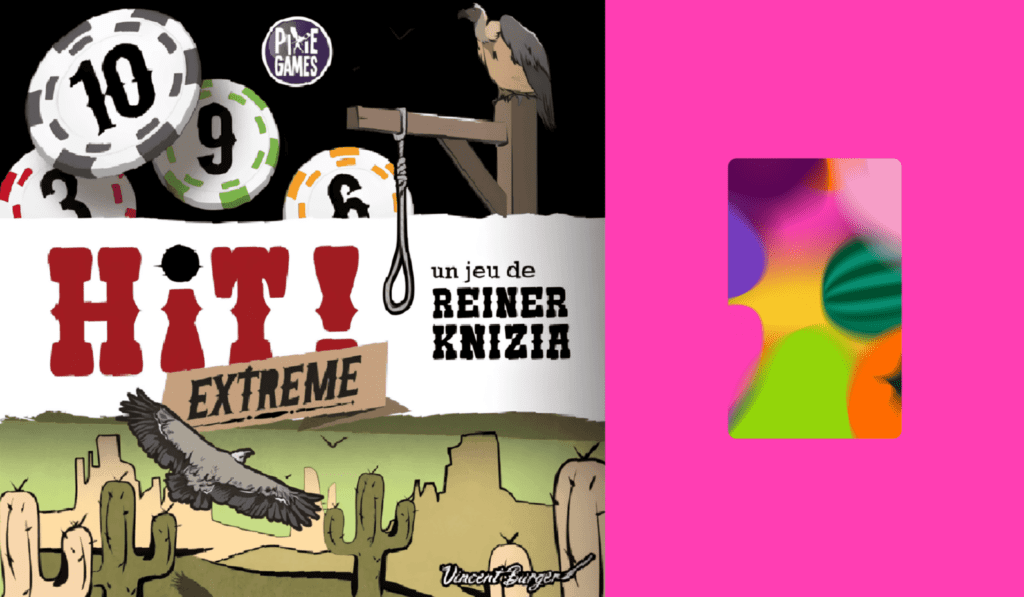
Simple it may be, but No Mercy spins that simplicity far further than the rules suggest. It’s “like a minute razorblade buried in the flesh of an orange,” says Charlie Theel of Player Elimination, “your cards can be turned against you to inflict unexpected suffering”. Crucially, balancing the risks depends on how your opponents are doing. “It really encourages you to keep pushing your luck because you’re so desperate to stop someone else from winning,” says Jon Purkis of Actualol. The interaction creates a “perfect little feedback loop of incompatible priorities” says Lynch.
The result is a game that has charmed a large portion of the industry, even if some commentators feel that it’s now been overshadowed by 2024’s Flip 7. “The speed and fun of the game is perfect for when you have 10 or 15 minutes,” says The Opinionated Gamers’ Dale Yu of No Mercy, “I can’t remember the last time we laughed so much while playing a game.” BoardGameGeek’s W. Eric Martin agrees, acknowledging that whilst No Mercy isn’t a truly new design, “the game is spectacular”. Whilst Dan Thurot of Space Biff wasn’t completely enamoured by the game’s bare bones approach (“it operates like the mathematical representation of a push-your-luck game manifested straight out of the Hylaean Theoric World”), even he acknowledges that it “manages to highlight what makes push-your-luck such a successful genre”.
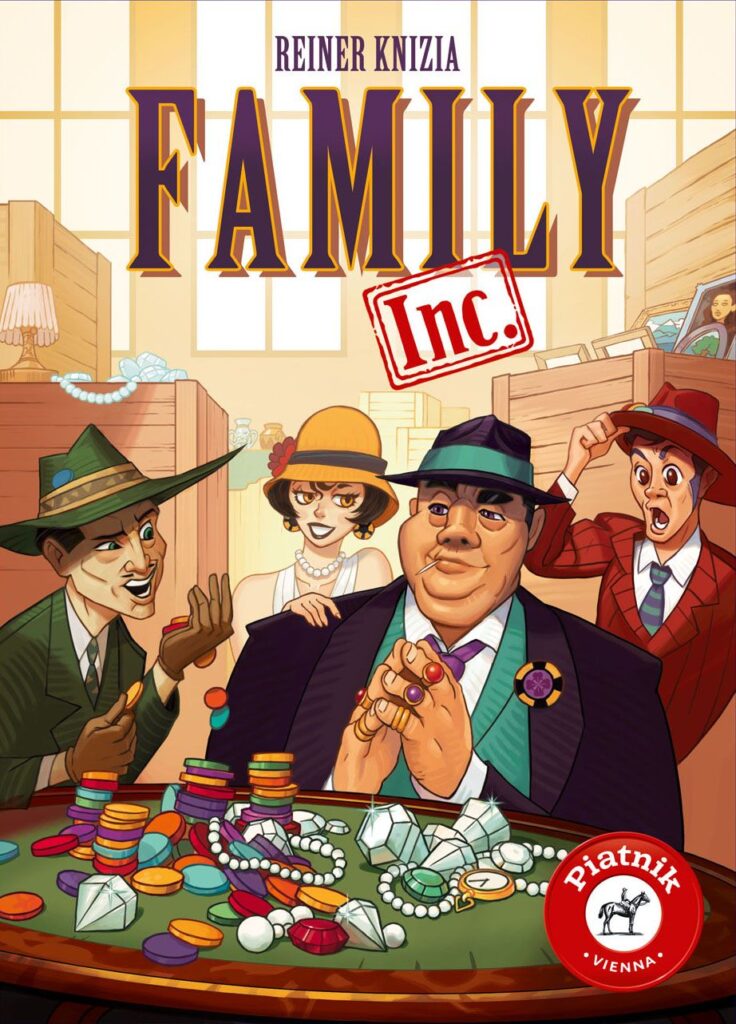
Arriving around the same time, 2021’s Family Inc. is No Mercy’s non-identical twin, born with poker-style chips rather than cards. Scoring is done during the game (Knizia’s preferred way of scoring, according to an interview with Coffee & Cardboard) and it’s a race to 100 points rather than the highest score. Stealing is also different, occurring at the end of your turn so that large stacks of stolen goods aren’t lost if the thief goes bust. It’s a subtly different experience, kinder, less chaotic and with a slower build up.
Family Inc. is clearly the result of the same creative sessions. It’s Radiohead’s Kid A to No Mercy’s Amnesiac, a two decade old reference that would have still been dated back when the next step on our genealogical journey was released.

Knizia’s Cheeky Monkey arrived in 2007 and many of the same traits are present. This time you can only steal the top chip of your opponents’ piles, and scoring is based on the number of chips you’ve banked and who has the majorities for each of the chip numbers/animals. It’s a child-friendly game, but, as with its descendants, it works for adult gamers too, despite an end-game that occasionally drags. “For a push-your-luck game there is a surprising amount of strategy,” says Matt Carlson of The Opinionated Gamers, “Cheeky Monkey appeals to such a diverse crowd, it will not be leaving my game collection in the foreseeable future”.
The roots of this family tree sprouted before Kid A/Amnesiac even existed. Recently re-released, 1998’s Circus Flohcati is a set-collection game of flipping cards and hoping not to draw duplicates. This time it’s a central row of cards you’re adding to, collecting a single card and leaving the rest of your spoils for other players to peruse – on your turn you might simply take a card from the center without risking anything. “Circus Flohcati is more thoughtful, strategic, and nuanced,” says Nick Murray of Bitewing Games, “No Mercy is more about the dumb swingy fun of following your gut and hoping it doesn’t blow up in your face”. Meeple Mountain’s founder Andy Matthews is a fan: “If you’re looking for a light and fun game for your collection, you can’t go wrong with Circus Flohcati,” he says in his review of Circus Flohcati.

There’s one final stop on our journey, an offshoot from when a well-placed Kid A/Amnesiac reference would have landed perfectly. In May 2002, Star Wars: Attack of the Clones was due to be released. Anticipation was high and Ravensburger wanted to capitalise on the release with a new game. The problem was that they only managed to get the licence four months before the film opened in cinemas. “I told them there was no way anybody could create a good, new design in that time frame,” said Knizia in an interview with Funagain.
Instead, Knizia proposed that they adapt a tried-and-tested design, turning to Circus Flohcati and thinking it could reach a new audience. With the help of a top-secret copy of the screenplay he added missions and other thematic tweaks, and Star Wars: Attack of the Clones Card Game hit shelves in time for the premier. Whilst some people liked the changes, the challenges of the short development period is perhaps responsible for a more muted reception: “Does to the original Circus Flohcati what the prequels did to the original Star Wars films,” said Jason Matthews on BoardGameGeek.
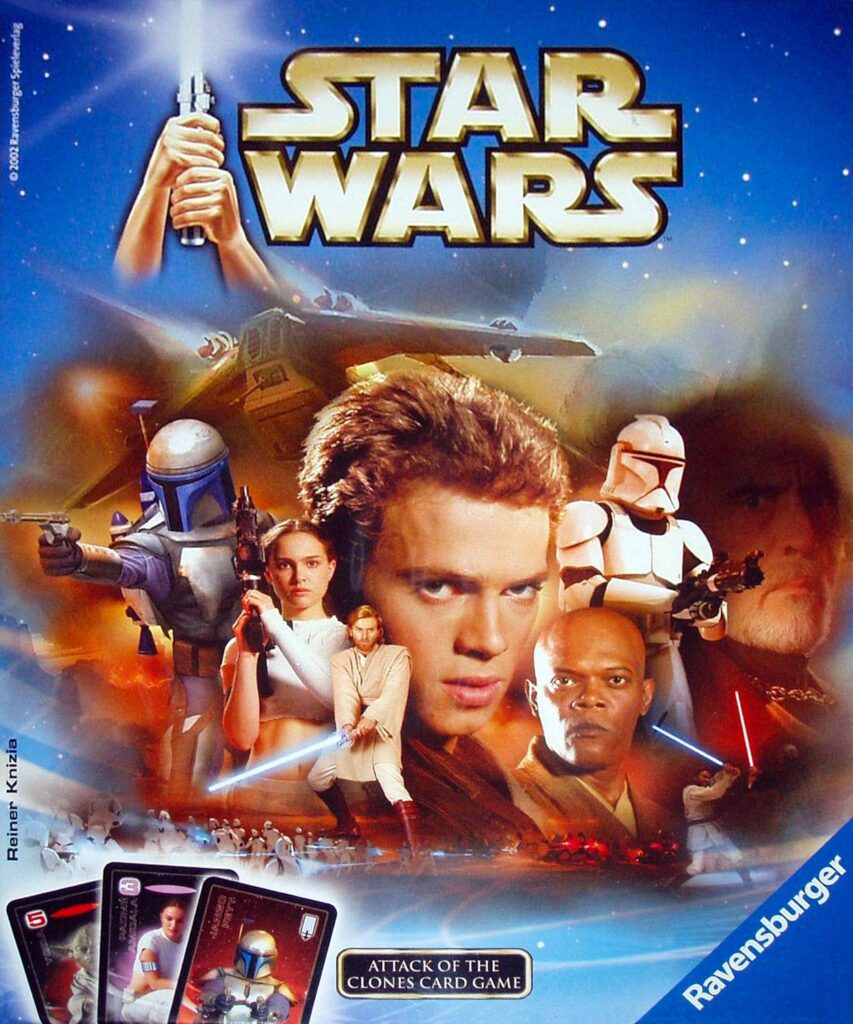
Outside of the immediate No Mercy family sit other Knizia games such as Age of War and Pickomino, games where risks are taken, stuff is collected and things can be stolen. They all combine Knizia’s preoccupation with interactive push-your-luck mechanisms. You might not be directly battling each other but Knizia wants his players to feel connected. “The important thing is I sit around the table with other people,” he said on Euronews, “I see in their eyes. We have fun together.” No Mercy is a “really fun, fast-paced push your luck game,” says Purkis, “one where you do care what’s going on one everyone else’s turn”.
As the previous paragraphs illustrate, Knizia’s interest in iterative design creates different experiences, catering to distinct (if sometimes overlapping) audiences both within and beyond the hobby. “The core elements are there,” Knizia says of re-implementations, “but the feeling for the game is quite different”. They’re all small and interactive push-your-luck games but No Mercy is chaotic, Family Inc. provides control, Cheeky Monkey is kid-friendly, Circus Flohcati is (relatively) thinky, whilst Star Wars: Attack of the Clones Card Game is targeted towards the mass market. As with everything, knowing your audience matters.
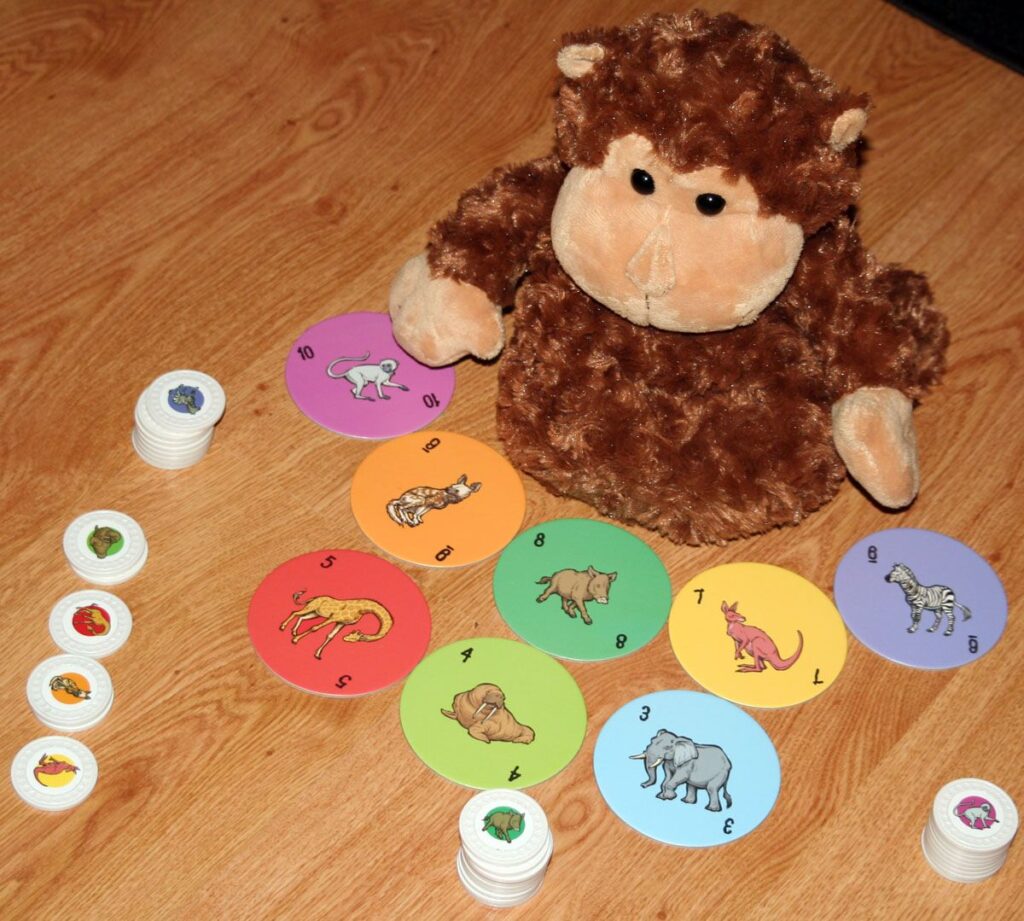
The No Mercy family demonstrates a designer confident enough in his own abilities to play around with established formulas and explore a design space. Whilst we don’t have a favourite here at Meeple Mountain, the production values of Cheeky Monkey certainly tempts us: some editions came with plastic animal poker chips and a plush monkey from which to draw them!
Narrating Numerous Neat Novelties
Knizia’s ‘N’ niche isn’t narrow, numbering some nice and noteworthy titles which we’ll name and nominate now:
Neue Spiele im alten Rom – A compendium of 14 games themed around the rise of ancient Rome, from city to republic to empire. Released in 1994, Neue Spiele im alten Rom (‘New Games in Old Rome’) is notable for containing the initial ideas and early versions of some larger games, including Mercator which was developed, expanded and released as Medici the following year, and Imperium which ultimately led to King’s Road released over 20 years later.
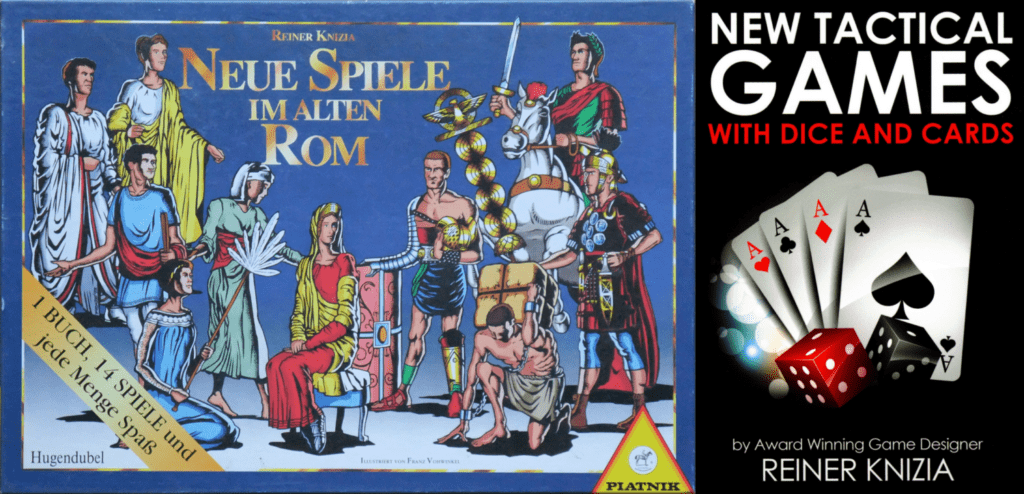
New Tactical Games with Dice and Cards – Knizia’s first book, released in 1990, the same year as his first ‘boxed’ game. New Tactical Games with Dice and Cards contains the rules to 50 games that are playable with some standard cards, dice and a few counters. Recently translated and published in English, many of the games found between its covers have been revised and released elsewhere, including Complica, Goldrausch and Tor.
Nightmare Productions – Also released as Dream Factory, Hollywood Golden Age and other names, 2000’s Nightmare Productions sees players bidding for actors, directors and other movie elements to produce the best horror films. The fifth title in Knizia’s auction pentalogy (fitting for the theme!), Nightmare Productions’ closed economy bidding makes it a hidden gem amongst auction aficionados. The best bit? The Razzies are represented with a bonus for making the worst film!
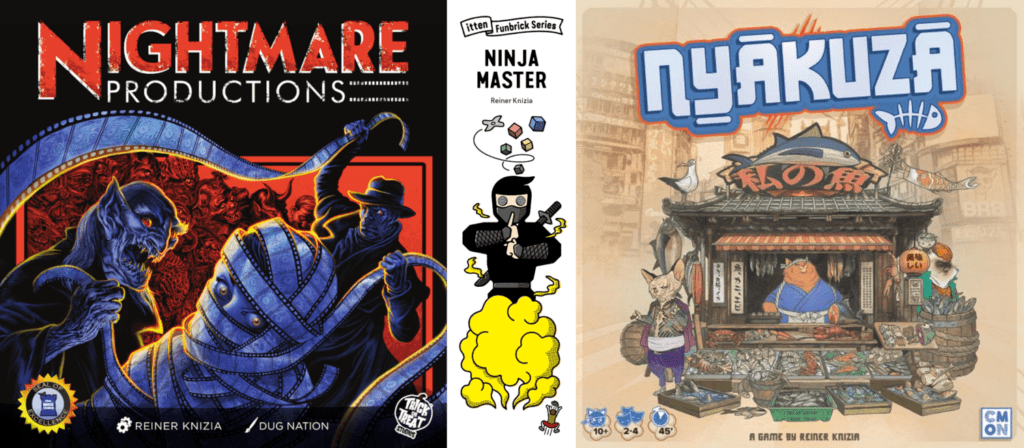
Ninja Master – A speedy dexterity microgame, 2022’s Ninja Master sees one player rolling a handful of dice and everyone racing to snatch up the wooden pieces around the dice arena. The results of the roll determine how much each item is worth, with five coloured ninja, a shuriken and a sword up for grabs. Choose well under pressure and you’ll be rewarded, but be too hasty and you’ll lose points. Think of this as Knizia’s take on Cobra Paw.
Nyakuza – Released originally as Orongo, this 2014 game sees players acting as the heads of Cat Yakuza Clans, trying to control the fishing industry around Oki-Yo Bay. Players bid for boats to catch fish, create networks of boats to claim territory, build seafood stalls to sell their catches and, ultimately, be the first player to build their ‘Grand Market Stall’. It’s a lesser known Knizia that’s well worth a look, although in both its original and new versions there are production issues (particularly colour) that cause accessibility issues.
–
Our navigation of ‘N’ nears its denouement. What do you think of our notetaking? Are we naughty noobs, nitwits and nincompoops whose negligence made you nauseous or are we nifty, noble and nonpareil in our efforts? What necessary ‘N’s have we neglected? Notify us in the comments below and take a nosey at the rest of the Reiner Knizia Alphabet here!


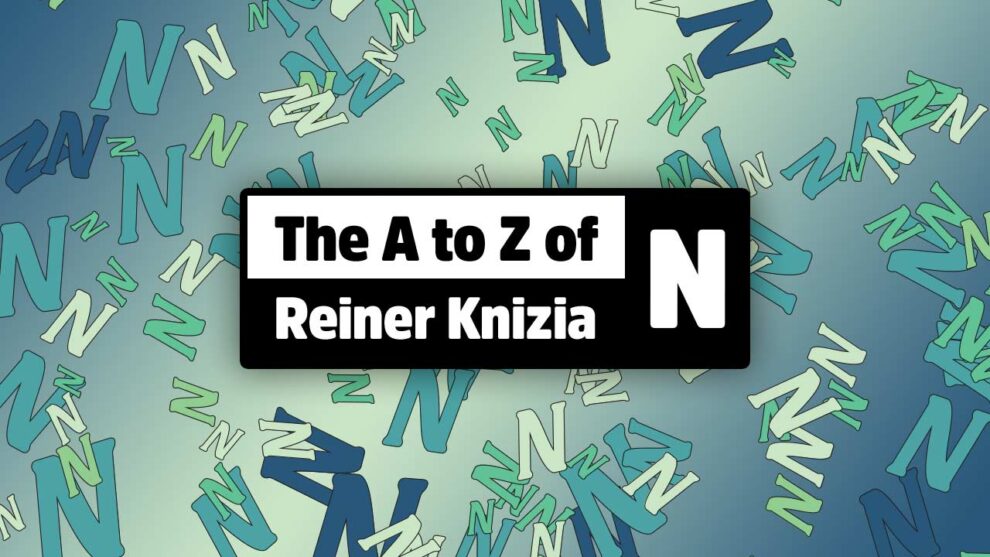


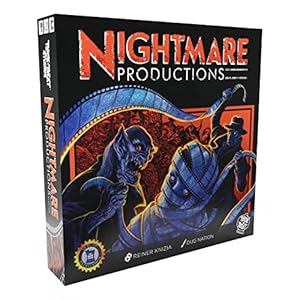

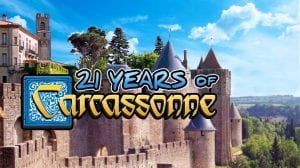

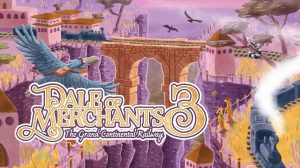



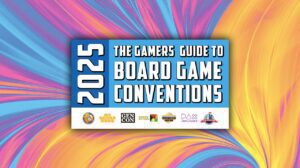

Add Comment